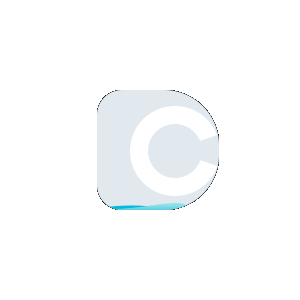JSON formatter is a tool that can let you add better formation to your data for better interpretation. It not only enables you to take care of syntax errors but also allows you to view the code in the tree view. The collapsible JSON formatter can beautify JSON code for you, so you don’t have to look at your messy file for fixing any mistakes. JSON format example is included in the tool to check how the code appears plus you can play with different elements to grasp their purpose.
JSON is JavaScript Object Notation which is an open-standard format for data interchange. The transmitted data is in text format which is entirely human-readable and provides a logical explanation. It is also known for storing information which can be sent through the servers to an application or browser. It doesn’t require any particular methods for parsing like XML all it needs is a Json.parse function. The serialized structure allows you to get better control over what you are working and as JSON is text, any JavaScript can be transformed into JSON when received from the server or before sending.
Today, this data interchange format is being used widely because of so many reasons one of which is; it isn’t as wordy as XML. Also, the files created in JSON are lesser in size than XML because it doesn’t require any ending tags. The structure of JSON, however, isn’t complicated to understand but sure is lengthy. The primary motive of online JSON formatter is to take care of all the errors in the file and give it a better appearance. You can manually look for bugs, but that will require hours of work if the data is large and the structure is tangled, our JSON file format fixer can notify you of the errors so you can learn and never make them again.
The JSON data formation is easier to read than XML and more comfortable to write plus the machines can read & write them adequately as well. XML is used as an exchange format that enables users to share or move data between similar applications. Well, JSON comes packed with that feature too. You can say that both these languages have more similarities than differences, but JSON, however, is beginning to become known. XML structures allow you to hold data which is more abundant in information, in short, you can say that XML is document exchange format and JSON is data exchange format.
The most common differences are JSON is data-oriented, is shorter, uses arrays and you can write it quickly plus the parsing process is a lot easier. The method of parsing includes three steps when it comes to XML. First, you have to go through the process where the document is fetched then, use the XML DOM (required to loop through the document) after that the third part where the values are extracted for storing in variables. But in JSON all you have to do is fetch it with the JSON string and use its function to parse.
The elements used in JSON are also found in JavaScript because JSON follows the standards of JS only, which also makes it easier to learn. Few of the elements that are used in JSON which are a part of JS are Objects, key/value pairs (Object members), arrays that contain different values and are enclosed in square brackets. The values must be a valid JSON data type (which can be another object), string, or any of the literals. Double quotes surround the strings, and a colon separates the pairs of keys/values.
The JSON code needs to be valid in order to work if it isn’t, the JSON format checker tool will notify you instantly by highlighting the lines where it finds errors. Adding JSON schema to your file is the best practice especially if the structure is too large. The JSON schema not just describes the content of the object but also enables you to find and make any required modifications in its values quickly.
JSON data format tool comes with a beautifier and Minifier, and these two tools can be used either to lessen the size of the file or to give a better presentation before delivering it to your client. Also, the modification process is reversible; on the click of a button, the structure will get back to a standard tree view.
The validation requires the content of the file to be according to the rules of JSON. A small error like missing a comma can result in a negative, so make sure to use our format JSON tool if you can’t look for errors manually.
The collapsible JSON formatter tool not only validates, minifies or beautifies your code but also assists in taking care of errors. The JSON data format tool can also be used for learning purposes, so if you want to practice your skills, then you are on the right page. Today’s websites require data to be processed fast and JSON is the only way to do that. Read the below given steps to format your JSON file:
- After landing on the page of JSON formatter, you will find a text editor with the title “Enter or paste your JSON” This is where you will be copying and pasting the contents from your saved file for better formation. The tool looks like the below image, and if you click the “Example” button on the top right corner of the tool, you will be given an example code to test the tool.
- If you want to upload the file or if the file is saved on some online server then you can either provide the link to it by hitting the “Load URL” button or upload it by clicking “Upload File” button.
- And, when you are done uploading the file or pasting the code, just press the “Process” button for results, which will be found under the tool and appear like this:
- You can still make any required modifications before downloading the file, such as minify the file, beautify it or update its contents.
We have more tools that can let you test your JSON code in different ways which are located in the development tools section, to give your JSON an Ultimate look, use our JSON Beautifier and JSON Editor. These two tools will provide you with more options to play around with, and if you just want to review your file, then we have a JSON Viewer just in case, where you will upload the code to view it in different styles which include the collapsible tree view. After formatting JSON, you can use the JSON beautifier tool to get the type of style you want, that can assist you in making alterations later.
 Plagiarism Plans
Plagiarism Plans  Paraphrasing Plans
Paraphrasing Plans  Reverse Image Search
Reverse Image Search 



























